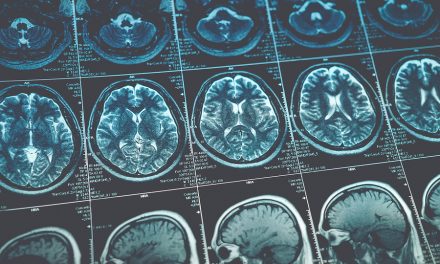Doctors spend their lives healing other people, but what happens when the only doctor that can save you is you? Doctor David Fajgenbaum found himself in this very situation, and is now specializing is saving his own life.
Always the picture of health, Fajgenbaum is battling Castleman’s disease, a rare autoimmune disorder involving an overgrowth of cells in the body’s lymph nodes. The 32-year-old doctor at the University of Pennsylvania summarizes Castleman’s as being almost like a mix between an autoimmune disease and a cancer. It is an extremely rare disease. He experienced three flare-ups over the first six months.
RELATED STORY:
In November 2010, Dr. Fajegenbaum’s immune system was attacking his organs, and his prognosis was grim. He said good-bye to his family and friends. His last rites were read to him. The former quarterback at Georgetown University said:
I went from being this healthy third-year medical student to being hospitalized in the intensive care unit with every organ failing. My liver, my kidneys, my bone marrow–completely shut down, gained 70 pounds of fluid due to liver and kidney failure and– and didn’t think that I was going to survive.2
Intensive chemotherapy brought Fajgenbaum back in 2010, but two relapses followed, and the doctors were still not aware that Castleman’s was the culprit. It took eleven weeks to make the diagnosis.
RELATED STORY:
With very little known about this rare disease, he took his treatment into his own hands, saying:
What I learned very quickly is that, though, I now had a name for that thing that was trying to kill me, the medical community had such a poor understanding for how the disease works.2
RELATED STORY:
Fajgenbaum’s research led him to Doctor Frits van Rhee at the University of Arkansas of Medical Sciences, where he started out as a patient. He soon became very interested in the research, so together, the two men began building a network, racing against time looking for solutions. Fajgenbaum said:
…when you have a deadly disease, you don’t really want to wait for the stars to align.2
The doctors prioritized all the possible studies that could be done, but despite their research, he continued to relapse. At this point, he was determined. He said:
I turned to my sisters and my wife, and I told them. And I said I’m going to dedicate the rest of my life, however long that might be, to trying to cure this disease.”2
With a disease that could come back at any moment, Fajgenbaum became his own test subject. He started conducting laboratory research on his samples, going through all of his medical data. He discovered that a drug that had never been used for Castleman’s before called Sirolimus might work. So he decided to try it on himself.
RELATED STORY:
Sirolimus was a major breakthrough. Fajgenbaum has now been in remission for four years. He says his perseverance was inspired in part by his mother’s own battle with cancer, adding:
My mom was amazing in not just finding silver linings in problems but actually creating silver linings to take a terrible experience and to create something positive out of it. And she instilled that in me.
This drug that I’m on that’s saving my life we’ve now tried it in– in a few other patients. It’s helping them. So we’re fighting with everything we have.2
RELATED STORY:
Dr. Fajgenbaum’s efforts caught attention of the Chan Zuckerberg Initiative, created by Facebook co-founder Mark Zuckerberg and his wife, Dr. Priscilla Chan, to treat, manage, and prevent all diseases by the end of the century. Tania Simoncelli, the organization’s science policy director,told CNN that it is highlighting Fajgenbaum’s CDCN as a model for how to rally a community together to best a rare disease. She said:
I haven’t seen anyone tackle a disease with that level of organization. He didn’t wait for the stars to align. He aligned them himself.1
Fajgenbaum now has enough data to take his treatment to clinical trial for everyone who’s dealing with Castleman’s. His extraordinary discovery is the road to the cure for a disease that nobody knows that much about.
Sources:












